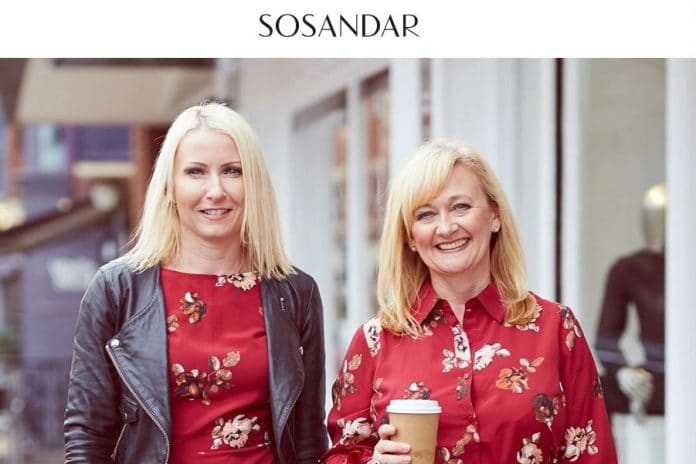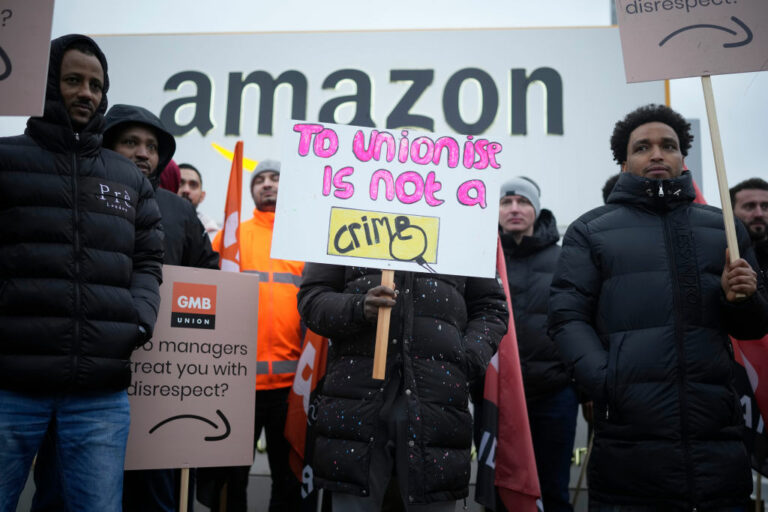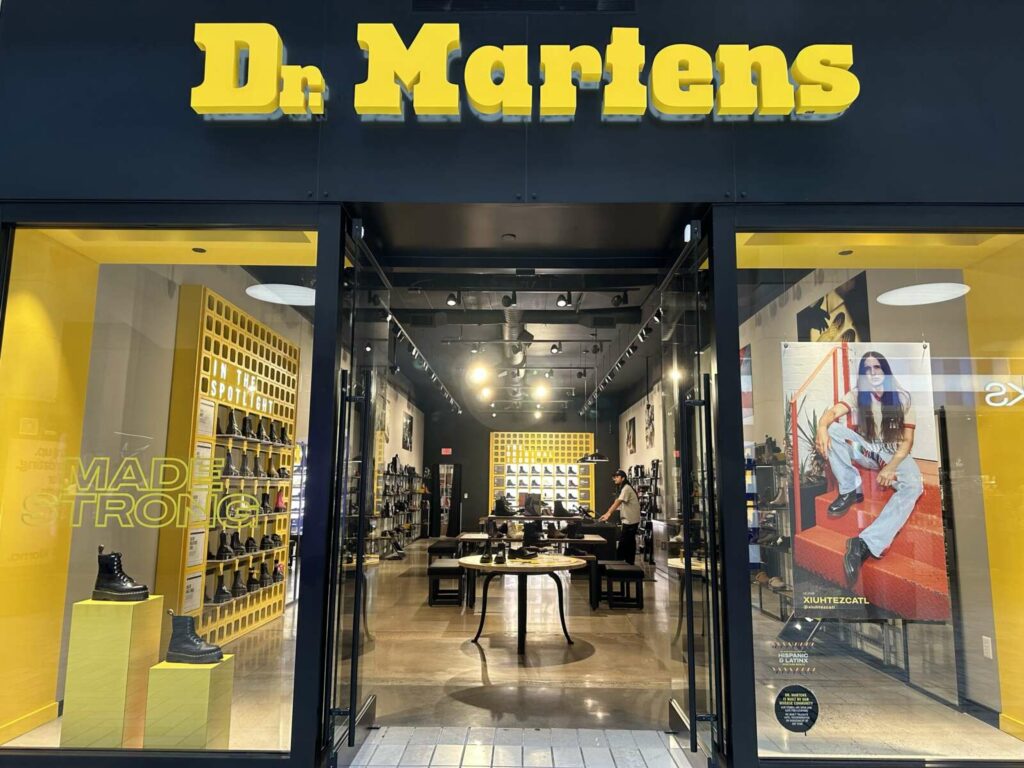For a fashion retailer that’s driven by former magazine publishers, Sosandar has shown impressive growth since its launch in September 2016.
After 10 years of working together at Look magazine, Ali Hall and Julie Lavington left their jobs as editor and publishing director respectively to establish the online womenswear retailer.
The joint chief executives didn’t waste time, either – they started working on the Sosandar website the day after they left Look in October 2015.
In its most recent update, which looked at the three months to December 31 2019, Sosandar recorded a revenue increase of 136 per cent thanks to an expanded product range and increased TV marketing.
The founders told Retail Gazette that this was thanks to “a successful trial in TV advertising which, combined with the already established channels of social, direct mail and PR, expanded Sosandar’s ability to attract more new customers”.
Hall and Lavington admitted to finding “a gap in the market” and took that as an opportunity to target women who had moved on from the likes of Asos, but weren’t quite ready for Bonmarche.
“There was no ecommerce brand targeting that market (30-plus). We knew it was prime time to launch an ageless, trend-led brand at affordable prices,” they said.

Suzanne Blake, global head of marketing at brand consultancy firm FutureBrand, attributed Sosandar’s success to its “deft understanding of its consumer base”, especially in today’s tough retail climate.
Understandably, Sosandar’s ability to identify its target market puts it on a pedestal, while its recognised rival and embattled retailer Marks & Spencer struggles to pinpoint its market.
M&S has often targeted an older age demographic in the past, but most recently it launched its exclusive Goodmove athleisure brand to attract a younger audience. Rita Harnett, ecommerce partner at media agency Wavemaker Global, suggested that M&S appears to have “lost its way with customers in this age group, while Sosandar has done a superb job of shaping its strategy around that audience”.
“The Per Una and Autograph customers of this world are looking for excitement and style ideas and M&S is not quite hitting the spot,” Harnett said.
“Sosandar has recognised the importance of influencers & celebrity endorsements”
“Sosandar has recognised the importance of influencers and celebrity endorsements, a mainstay of the M&S marketing strategy, showcasing products that have been worn by personalities that resonate with that age group, such as Amanda Holden and Susanna Reid.”
Ten years before Sosandar launched, fellow online fashion retailer Boohoo embarked on becoming one of the biggest online retailers, most recently recording sales of £473.7 million for the group.
Sosandar’s initiative to use a similar formula a Boohoo by targeting a niche and fashion-conscious market was arguably a risk, considering that the traditionally older demographic may not be as amenable to online fashion as millennials.
However, Sosandar’s successful Christmas trading went against expectations, reporting a ”substantial” growth in its active customer database, which now stands at 110,000, and that repeat orders in the period increased by 140 per cent.
So what has it done right?
According to Harnett, Sosandar arrived in the market at an opportune time.
“The 30-plus age group is undergoing a challenging time, with multiple high street retailers struggling to cope with the changing demands of customers,” she explained.
“Traditional retailers such as Debenhams and House of Fraser, where this age group would once have shopped, are going through turmoil.”

Besides this, Sosandar offers a “seamless customer experience” by creating an easy-to-navigate website – something crucial for an online retailer.
The product detail pages also list other products to “wear it with”, which can be added to the basket straight from the same page – offering convenience.
Nottingham Business School retail research associate Nelson Blackley said Sosandar’s founders have “a powerful combination of creativity and data understanding”, which has benefited them when embarking on their online fashion start-up.
He added that Sosandar’s debt-free status is “unusual” considering it’s a form of pureplay retail.
“It operated only from shareholder funding which means it must be responsible in the way it develops and grows organically,” Blackley told Retail Gazette.
“So cautious growth is required as future funding depends on share issues.
“However, it has used some of the £7 million raised from the sale of new shares last summer wisely to increase investment in relevant channels such as TV marketing campaigns, including digital ads in underground stations to increase brand awareness, customer retention and new customer acquisition.
“This also has built on its already established channels of social media, direct mail and PR.”
“The 30-plus age group is undergoing a challenging time”
Alex Smith, brand expert at design agency Basic Arts, said it’s expected that retailers such as M&S – who have traditionally seen the 30-plus range as their “territory” – may be threatened by Sosandar’s acceleration. But he suggested that these high street retailers “should have been prepared”.
He also said these retailers should now focus on their bricks-and-mortar space rather than work hard on their digital space.
“I don’t think the answer for such embattled high street brands is to work too hard to chase Sosandar into the digital space, because it’s unlikely they’ll ever be able to match the executional strength of a brand who are built for that environment from the ground up,” Smith said.
“Instead they should be focusing on their strengths in the bricks and mortar space – something that isn’t going to disappear – and offer a counterpoint to online fashion, doing things that Sosandar could never do.”
Sosandar’s brand campaigns have been running on social media platforms for a good couple of years, and its brand awareness strategy sets it apart from less successful competitors.
To drive this, Sosandar’s co-chief executives’ previous editorial experience was utilised to communicate with their audience, and tap into that authenticity and warmth via innovative social, direct mail and PR campaigns.
Nevertheless, Sosandar has layered on reasons for customers to remain loyal, such as broadening its range and a offering a competitive delivery pass offer comparable to the likes of Asos.
Perhaps the problem for the likes of M&S, Debenhams and House of Fraser is that nowadays they are attempting to appeal to all demographics – while Sosandar is clear on who its serving.
Click here to sign up to Retail Gazette‘s free daily email newsletter


















